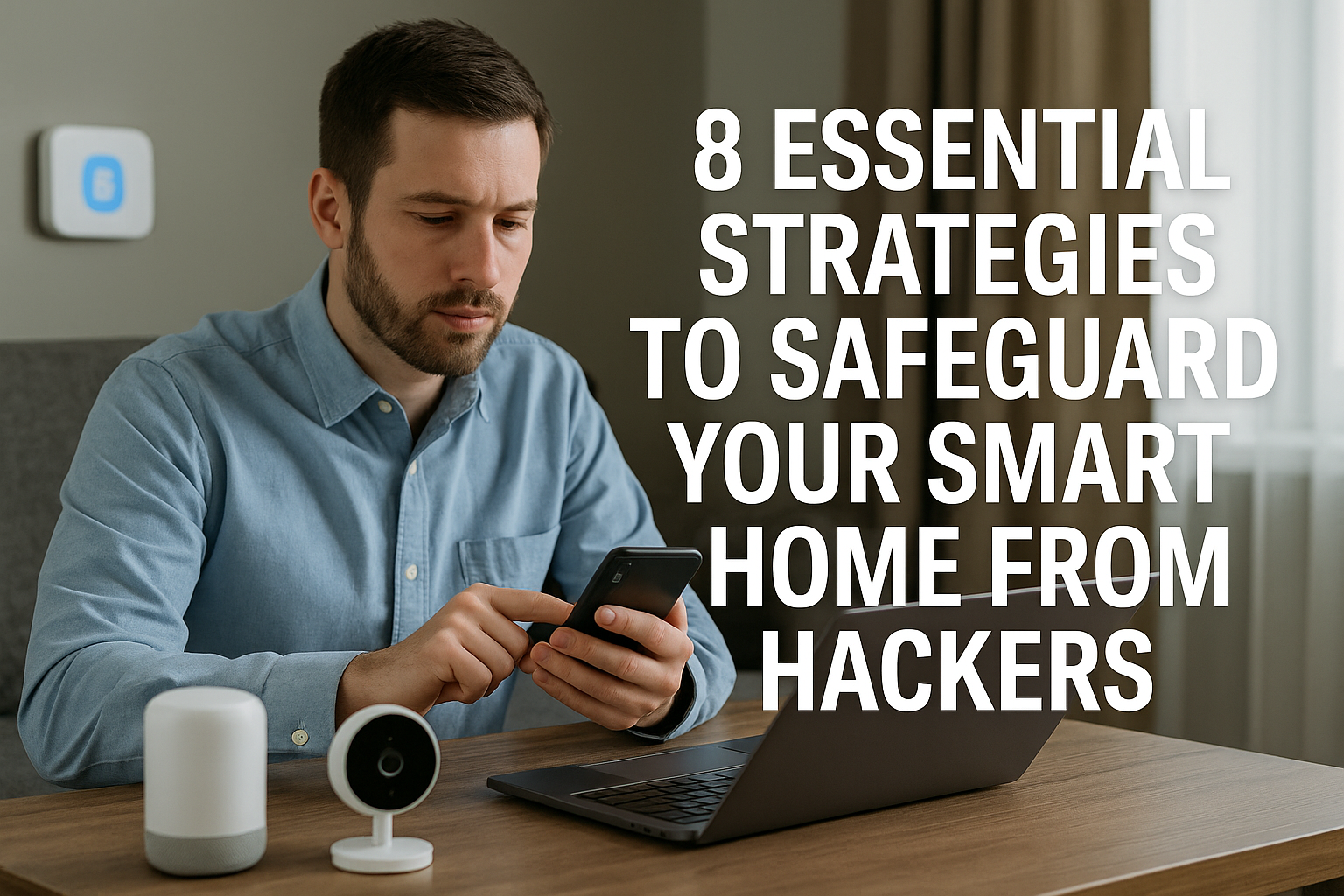Smart home devices have revolutionized modern living, offering unparalleled convenience and automation. However, this interconnectedness also introduces potential vulnerabilities, making it imperative to implement robust security measures. This guide outlines eight critical strategies to protect your smart home from potential cyber threats.
1. Secure Your Wi-Fi Network
Your Wi-Fi network serves as the backbone of your smart home. Ensuring its security is paramount.
- Change Default Credentials: Replace default usernames and passwords with unique, strong combinations.
- Enable Encryption: Utilize WPA3 encryption to protect data transmission.
- Set Up a Guest Network: Isolate smart devices on a separate network to prevent potential breaches from affecting primary devices.
- Regularly Update Router Firmware: Keep your router’s software up-to-date to patch known vulnerabilities.
2. Use Strong, Unique Passwords
Weak or reused passwords are a common entry point for hackers.
- Create Complex Passwords: Combine uppercase and lowercase letters, numbers, and symbols.
- Avoid Reusing Passwords: Ensure each device and account has a distinct password.
- Utilize Password Managers: Tools like LastPass or Bitwarden can help manage and generate secure passwords.
3. Enable Two-Factor Authentication (2FA)
Adding an extra layer of security can thwart unauthorized access.
- Activate 2FA: Use authentication apps like Google Authenticator or Authy for added protection.
- Regularly Review Access Logs: Monitor for any suspicious login attempts.
4. Keep Firmware and Software Updated
Manufacturers often release updates to address security flaws.
- Enable Automatic Updates: Ensure devices are set to update automatically.
- Manually Check for Updates: Periodically verify that all devices have the latest firmware.
5. Limit Third-Party Access
Integrating third-party applications can introduce vulnerabilities.
- Review Permissions: Only grant necessary access to third-party apps.
- Regularly Audit Connected Services: Remove any unused or suspicious integrations.
6. Disable Unused Features
Unused functionalities can be exploited by hackers.
- Turn Off Unnecessary Services: Disable features like remote access or voice control if not in use.
- Restrict Device Capabilities: Limit functionalities to essential operations.
7. Monitor Device Activity
Keeping an eye on device behavior can help detect anomalies.
- Set Up Alerts: Configure notifications for unusual activities.
- Regularly Review Logs: Check device logs for unauthorized access or changes.
8. Educate Household Members
Awareness is a crucial component of cybersecurity.
- Conduct Regular Training: Inform family members about potential risks and safe practices.
- Establish Usage Guidelines: Set clear rules for device usage and access.
Conclusion
Securing your smart home requires a proactive approach, combining technological safeguards with informed usage. By implementing these strategies, you can enjoy the benefits of smart devices while minimizing potential risks.

